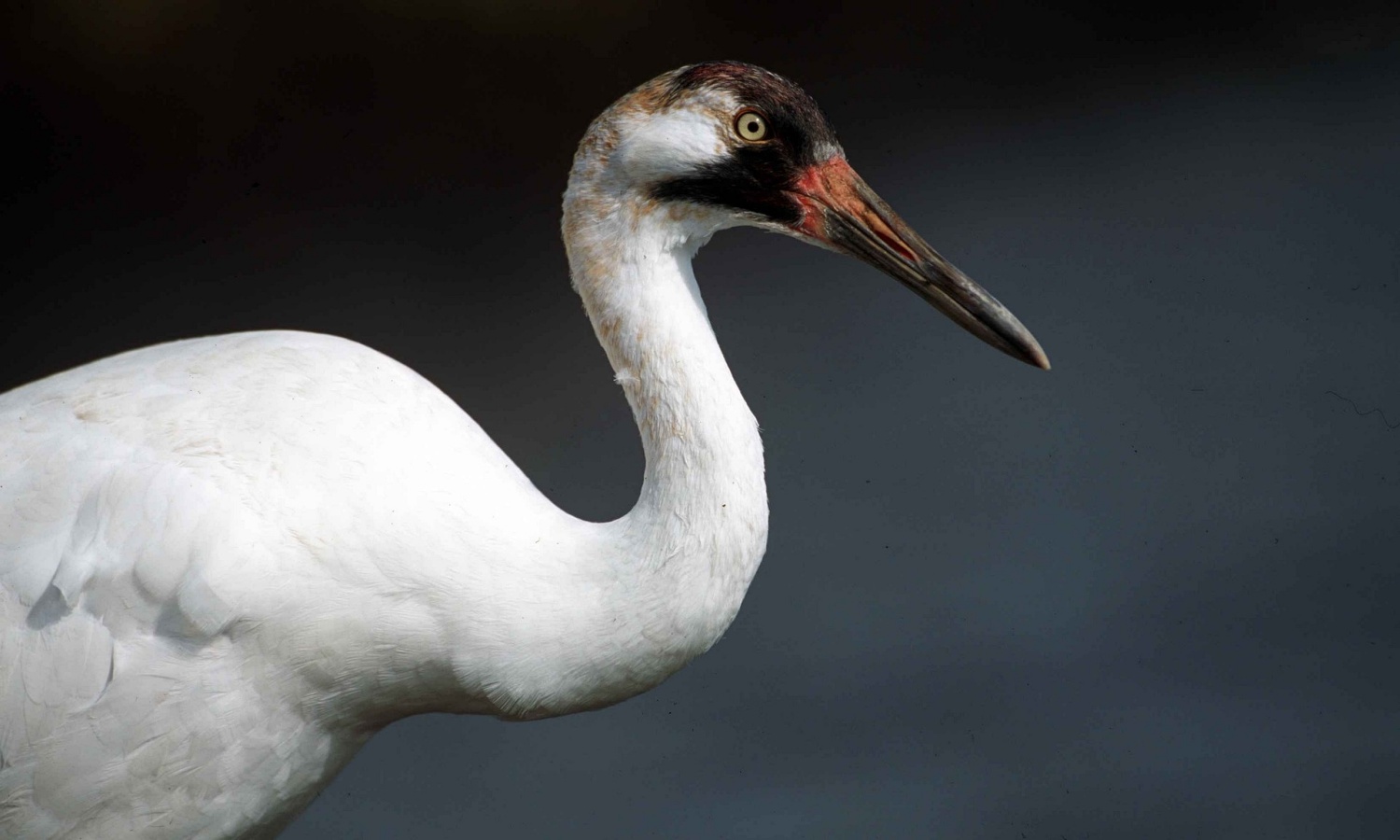The beautiful Elk Point, Alberta region, part of the Lakeland, is known as a gateway to a host of freshwater lakes, good fishing, canoeing, hiking, and kayaking. The Iron Horse Trail is a popular tourist attraction for those on foot, horseback, or ATV. And of course, the mountain-fed North Saskatchewan River carves a stunning valley just before you reach the town.
Which is why area residents were stunned to hear that a proposed industrial wind turbine plant is slated for the top of its river banks just southeast of the town. But they won’t be the only ones surprised: Elemental Energy’s (EE) Northern Valley project is directly in the migratory path of the endangered Whooping Crane. According to the Government of Canada:
Canada’s responsibility for this species’ conservation is very high.
wildlife-species.canada.ca
UPDATE (April 5th, 2023): New data from Environment Canada and Climate Change shows that the Northern Valley is also the “summer grounds” for the Endangered Whooping Crane. This is huge news. Read here.
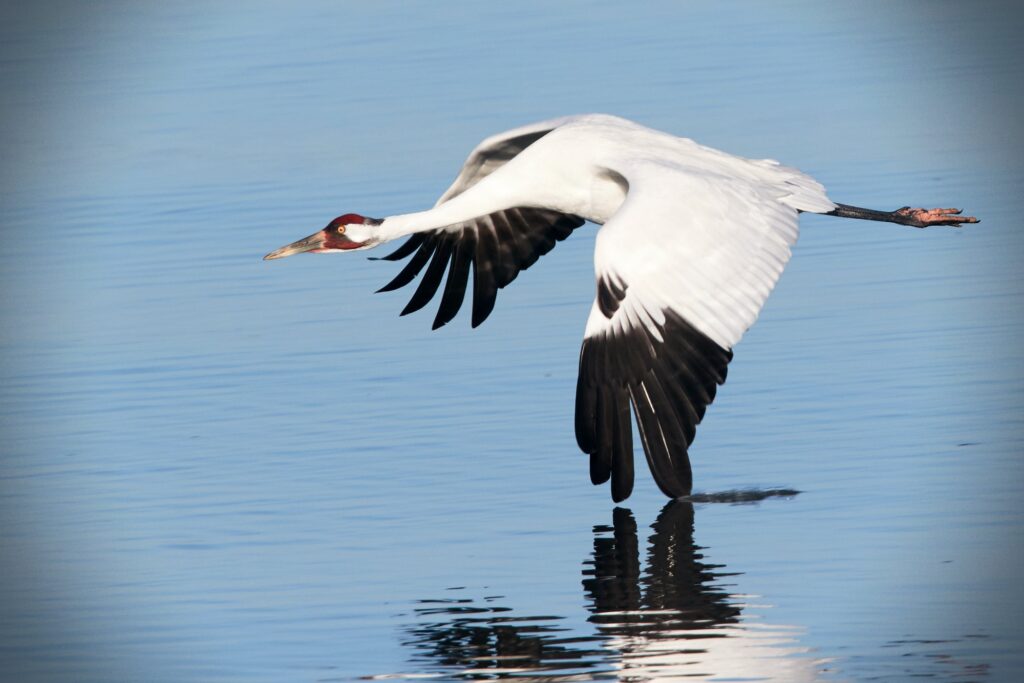
Local residents have reported spotting the 1.24 to 1.6 m (4”1″ to 5’3″) birds with a wingspan of up to 2.3m (7’7″). (Share your pictures. We’d love to post them! Email Wind Concerns here). The reason is simple: Good turbine locations and migratory corridors tend to occur in the same areas because of favorable wind conditions (though the proposed Northland Power project just north of Elk Point was cancelled in part due to “a lack of wind”, according to the company.).1
According to previous research, “Wind farms in areas that are used regularly by large numbers of species for feeding and roosting on migratory routes, or local flight routes between foraging and roosting areas, present a greater risk to the species that occupy the area.2
Taking Their Habitat
The Whooping Crane (Grus americana) is a listed endangered species in North America, protected under federal legislation in the United States and Canada. The only self-sustaining and wild population of Whooping Cranes nests are near Wood Buffalo National Park on the northern border of Alberta and the Northwest Territories. These cranes number around 543, according to data given to us by Environment Canada and Climate Change (ECCC). Using GPS tracking, biologists with the United States Geological Survey (USGS) mapped the migratory path of a sample of the massive birds — and the western edge of the corridor passes right through the proposed wind turbine project area:
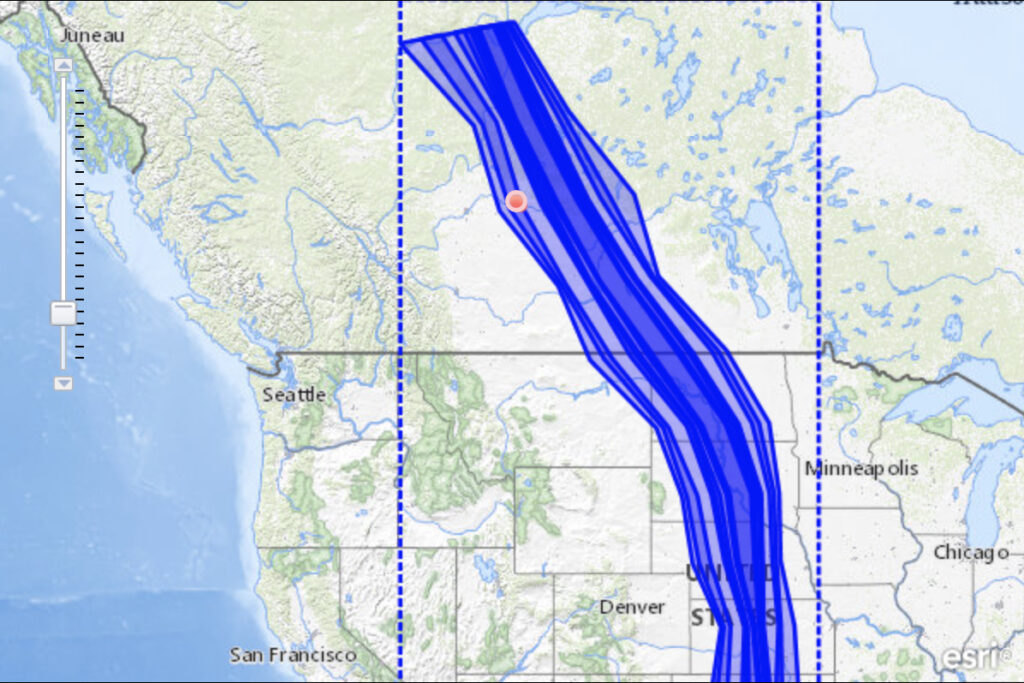
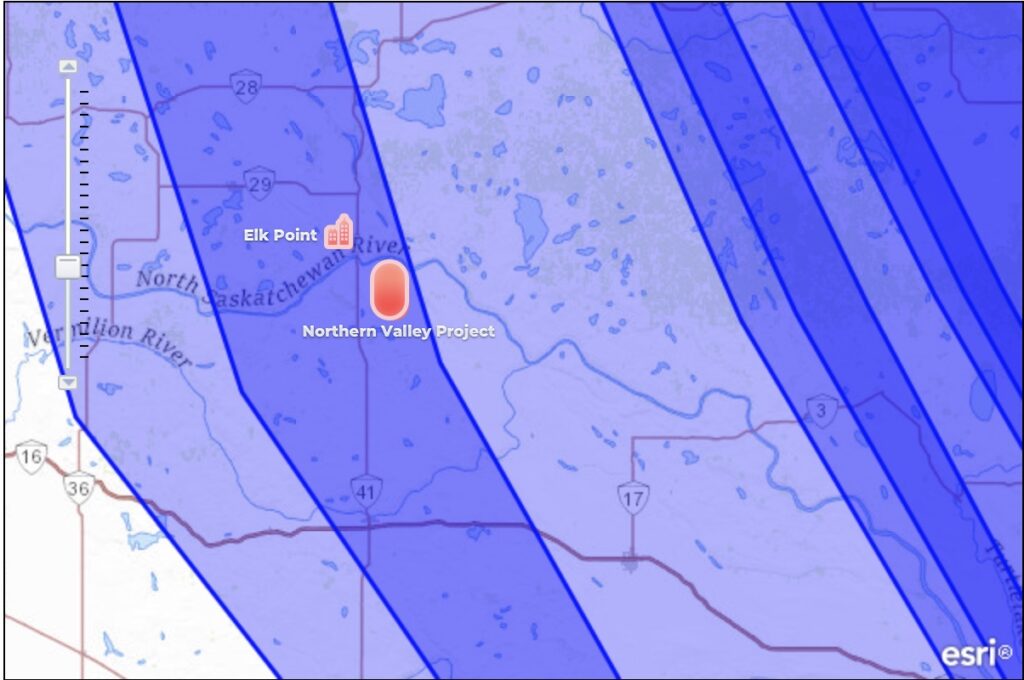
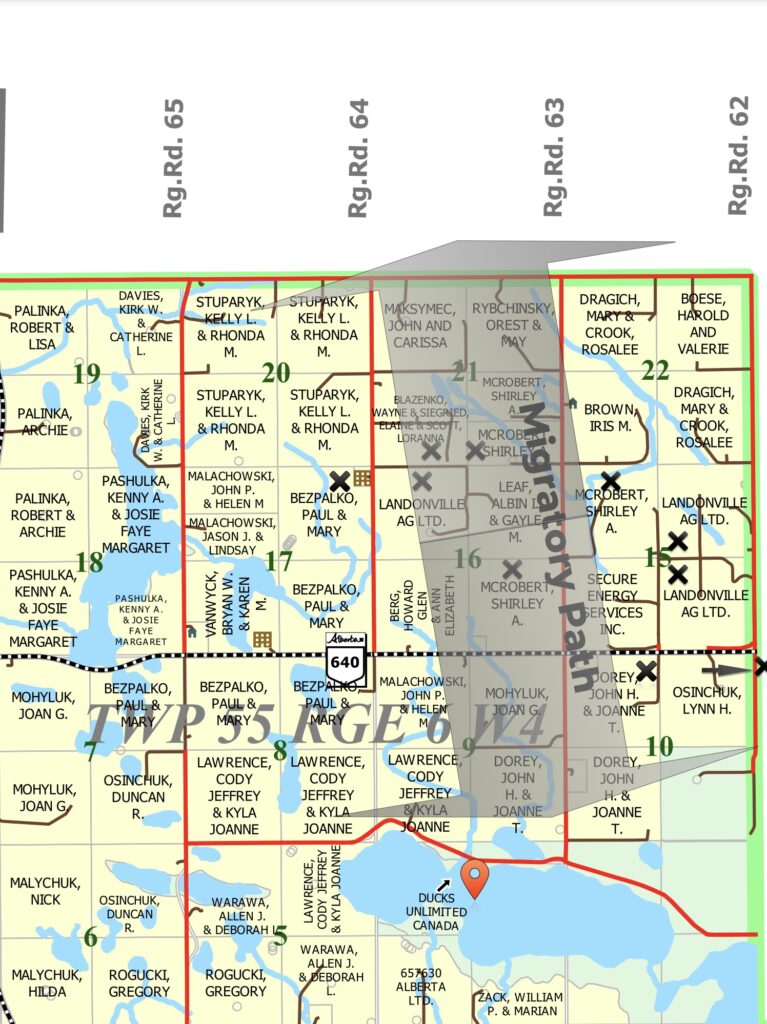
and in line with a Ducks Unlimited Habitat
The first order of concern is the potential for Whooping Cranes to collide with wind turbine blades. Studies show as many as 1.17 million birds are killed by turbines in the United States alone each year — a number that will only increase with the rapid spread of massive wind farms.3 In 2014, a study was published on “Sandhill Crane Collisions with Wind Turbines in Texas”.4 It noted that Whooping and Sandhill Cranes use their migratory staging habitat in a similar manner.5 It is already well-known that cranes are susceptible to mortality from colliding with power lines and other large obstacles,6 and the study did observe Sandhill collisions with turbines. American Bird Conservancy has already raised concerns with proposed wind turbine projects in the Whooping Cranes’ migratory path. They warned that even a few strikes, with such a small population of the endangered bird, is no small matter.
The loss of even a few Whooping Cranes could result in a population-level effect…
Letter: “Revival of the Poorly-sited Merricourt Wind Energy Project in North Dakota”, November 17, 2014
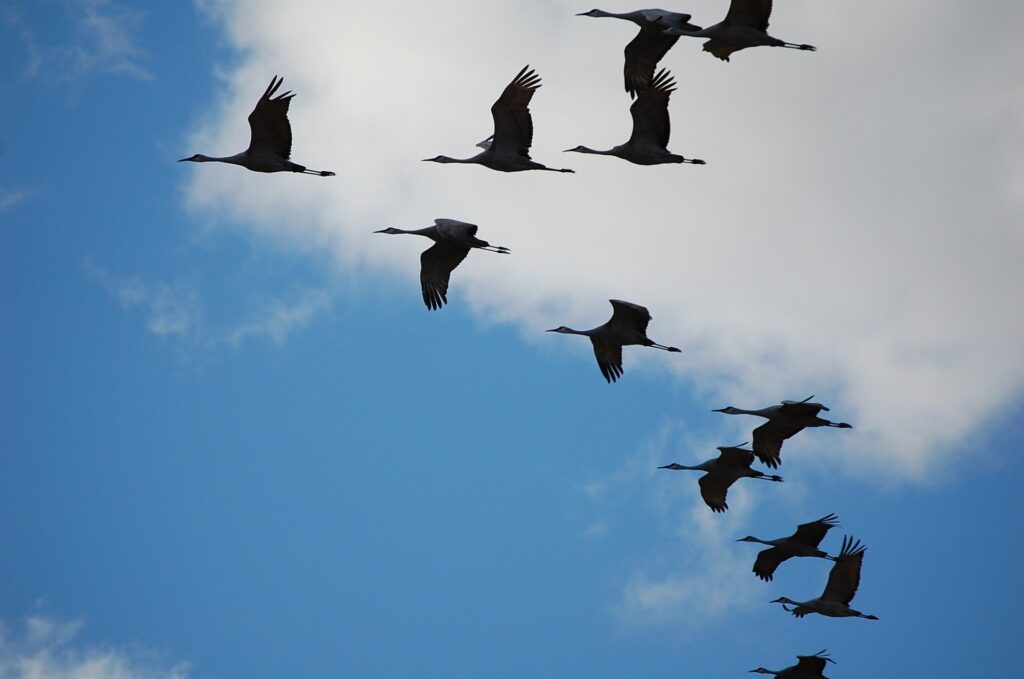
Dr. Aaron Pearse, PhD, spoke with Wind Concerns via email regarding the concerns over this wind project. He and his colleagues observed that Whooping Cranes migrating across their study area in 2010 and 2016 were 20 times more likely to select “rest stop” locations at least 5 km away from wind turbines than those closer to turbines.7 That means that the endangered cranes are increasingly being driven out of natural habitats along their migratory paths as wind turbines proliferate.
The results of this ground-breaking study are really eye-opening — the buildout of wind energy is already having a negative cumulative impact. There are more than 10,000 wind turbines scattered throughout the Whooping Cranes’ migratory pathway. We now know that too many of these turbines are eliminating important migratory stopover habitat for this Endangered species.
Joel Merriman, Director of the Bird-Smart Wind Energy Campaign at American Bird Conservancy, April 1, 2021; ESA
Tom Stehn, Whooping Crane coordinator for the U.S. Fish and Wildlife Service, warned in 2008: “Even if they avoid killing the cranes, the wind farms would be taking hundreds of square miles of migration stopover habitat away from the cranes.”8 Thus concluded The Ecological Society of America: “Siting wind infrastructure outside of Whooping Cranes’ migration corridor would reduce the risk of further habitat loss not only for Whooping Cranes, but also for millions of other birds that use the same land for breeding, migration, and wintering habitat.”9 Dr. Pearse adds:
In the past, federal agencies had thought of impacts related to wind energy primarily associated with collision risks. I think this research changes that paradigm to a greater focus on potential impacts to important migration habitats.
Dr. Aaron Pearse, PhD, March 10, 2021; esa.org
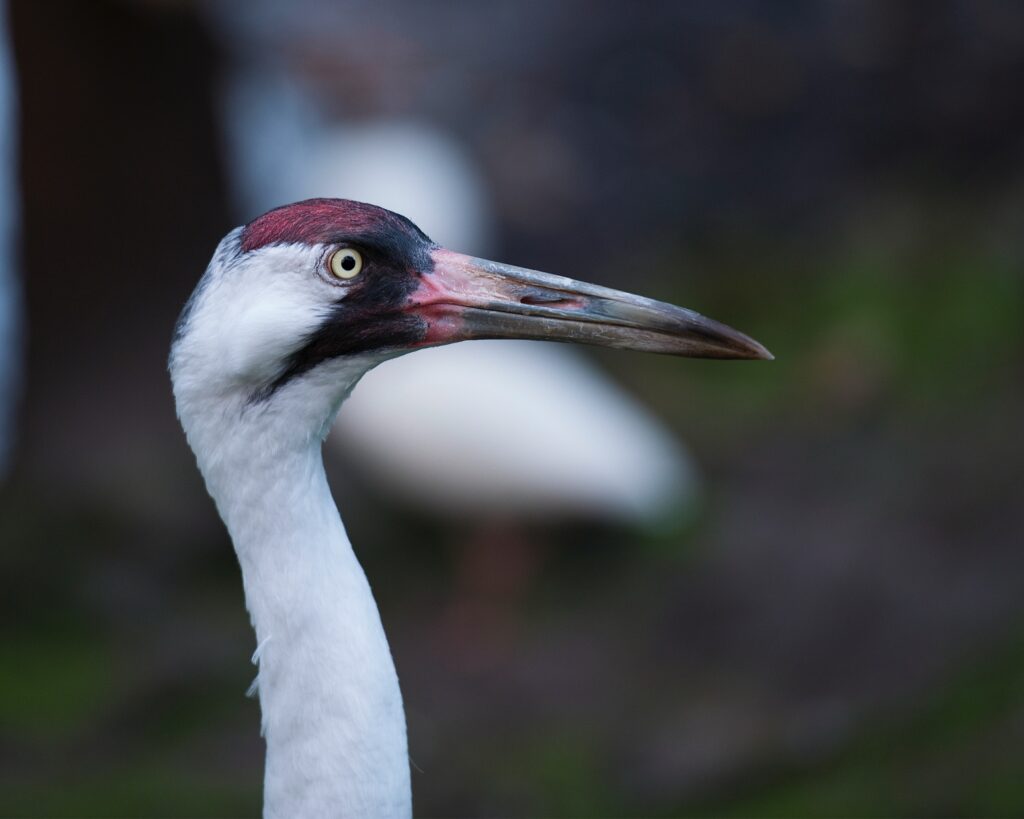
The National Academy of Science Report in 2004 on Platte River endangered species confirmed unequivocally the threat to Whooping Cranes if migration habitat is lost.10 Increasingly, it’s now due to massive industrial wind turbine projects.
The competition for wind between the turbine industry and Whooping Cranes and other migratory birds is getting more intense — but the wind industry isn’t always winning. Xcel Energy Inc. decided to scrap a $400 million wind farm project in southeast North Dakota after the Fish and Wildlife Service noted the wind farm’s potential adverse impacts on the Whooping Crane and piping plover. It was deemed that the project’s 262-foot-tall wind turbines, with blades stretching out 126 feet, could harm Whooping Cranes, plovers and other migratory bird species, in apparent violation of both the Endangered Species Act and international migratory bird treaties.11 The proposed wind turbines in the Elemental Energy project slated for Northern Valley are 394ft (120m).12
It’s time that Elemental Energy — or Alberta’s regulatory bodies — put a stop to the Northern Valley project and its potential assault on the ecologically sensitive Lakeland region.
- Sugimoto, H., and H. Matsuda. 2011. “Collision risk of whitefronted geese with wind turbines”. Ornithological Science 10:61-71[↩]
- Drewitt, A. L., and R. H. W Langston. 2008. “Collision effects of wind-power generators and other obstacles on birds.” Annals of the New York Academy of Sciences 1134:233–266[↩]
- abcbirds.org[↩]
- nacwg.org[↩]
- Kauffeld, J. D. 1982. “Management of migratory crane habitat on Alamosa and Monte Vista National Wildlife Refuges.” Pages 117-121 in J. C. Lewis, editor. Proceedings of the 1981 crane workshop. National Audubon Society, Tavernier, Florida, USA.[↩]
- Windingstad, R. M. 1988. “Nonhunting mortality in Sandhill Cranes”. Journal of Wildlife Management 53:260-263[↩]
- Study: “Migrating Whooping Cranes avoid wind-energy infrastructure when selecting stopover habitat”, March 7, 2021[↩]
- February 28, 2008; nbcnews.com[↩]
- March 10, 2021; esa.org[↩]
- nap.nationalacademies.org[↩]
- masterresource.org[↩]
- cf. How Big?[↩]
Mark Mallett is a former award-winning reporter with CTV Edmonton and an independent researcher and author. His family homesteaded between Vermilion and Cold Lake, Alberta, and now resides in the Lakeland region. Mark is Editor in Chief of Wind Concerns.

